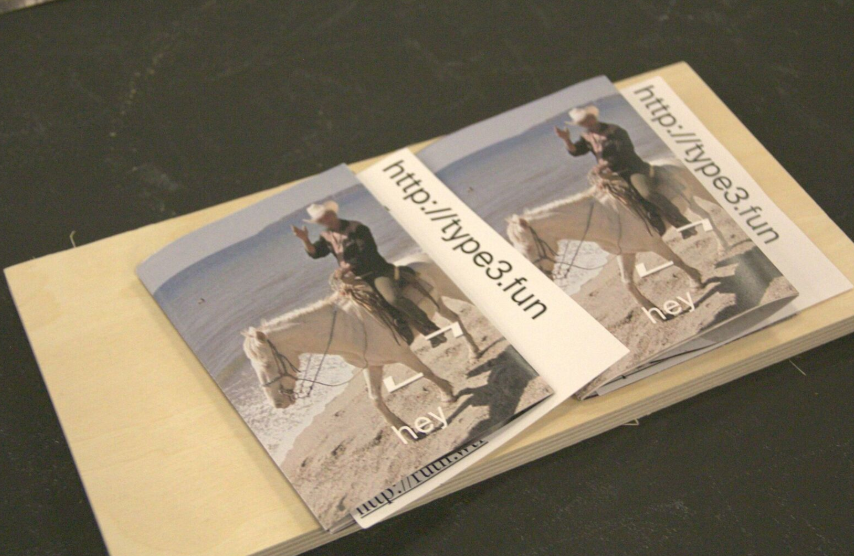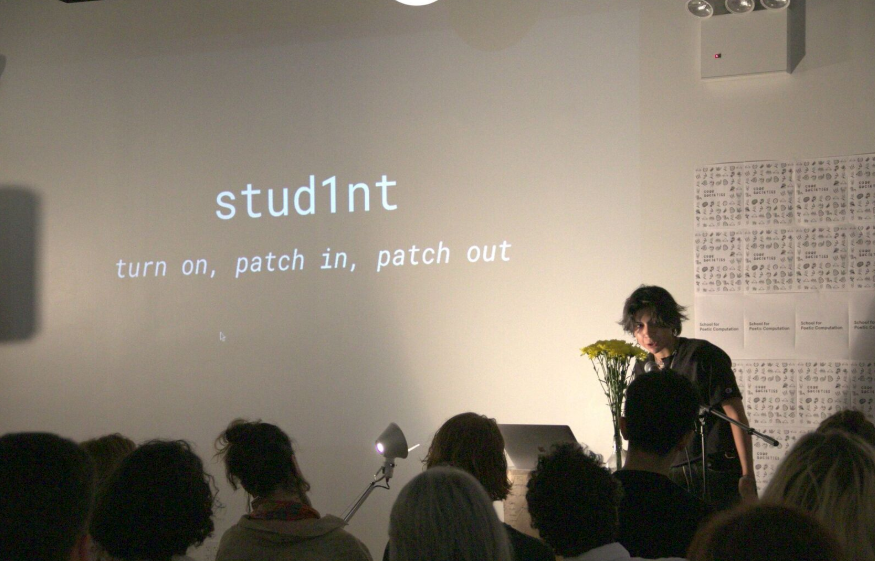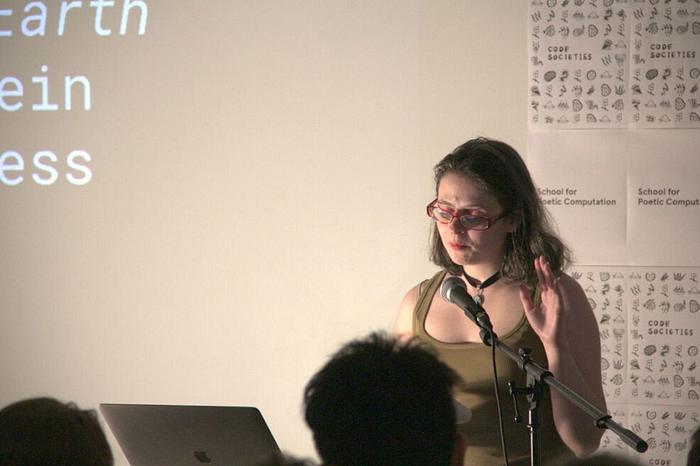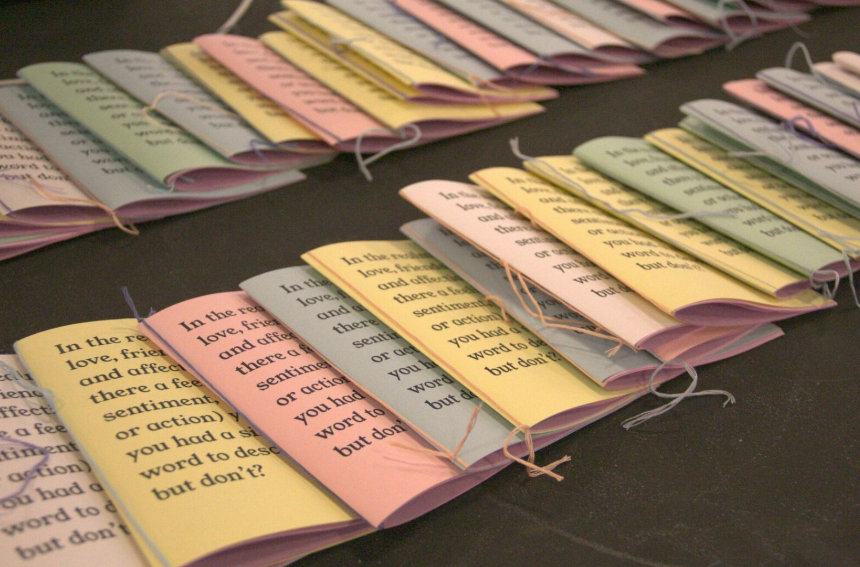written by @stud1nt and @riffdonston
Three weeks of Code Societies truly flew by! Fast forward to the evening of Saturday, July 21st for our highly anticipated student showcase at Prime Produce, a a guild for social good, located in Hell’s Kitchen.
Here and there, over the three weeks, we hypothesized in class and during in-between breaks about what we might do or what we could do with tentative excitement. The parameters for our projects were spectacularly and speculatively open ended: something we made for class, something we made alongside classwork, a reflection, a performance, an installation done individually or as a group.
For information about the students, please check out Meet the Students posting.

Melanie kicked off the night with a warm introduction to the School for Poetic Computation, a special shout-out to the wonderful artists and teachers who made Code Societies a lived reality, and the intentions behind our student showcase.

The first presentation came from k. and jenny who paired up to tackle questions around public and private surveillance and the never-ending battle to keep our phones charged with their cell phone wall!


Greyory presented “Silly Bees”, a mixed media video installation based on a 17th century madrigal that imagines a speculative future of lost data sets, collapsed networks, and confused machines.

Ruth shared type3, a playful website integrating Google Streetview. Visitors are prompted to enter a three letter word. If it matches one within the arbitrary 30 entry database, they are directed to a related location.


Tanja presented her recently completed six year project “Are you really my friend?” which explores what friendship means in the age of Facebook through portraits and paraphernalia.


Lynne made a Type Proof Generator, which takes a limited character set input and tries to create new sentences with only those glyphs.

Lisa drew from Allison Parrish’s class “Authorizing text under control” Markov chain text generator and lyrics from love songs to generate poetry!


stud1nt addressed questions of accessibility, authorship, and collaboration through an interactive modular synthesis installation that was recording throughout the evening.





Azul reflected on how the experience of Code Societies prompted her to explore more about the framing and reframing of our perspectives around being more and doing less.

Nicolás shared a few of his ideas around the way spending time with the Cybernetic Library shaped his understanding of building relationships with others. He suggested creating an interactive component to the library where perceived engagement with a book triggered more or less reading light.

In gathering answers to the question “in the realm of love, friendship, and affection, is there a feeling (or sentiment, emotion, or action) you wish you had a single word to describe, but don’t?”, Bailey hoped to expound the limitations of language surrounding intimacy and realize an undefined, queer ontology of relations that we are continuously producing as we care for one another.



Maria organized a “Stackoverflow for Artists” picnic during the course of Code Societies for students to hang out, reflect on classes, and explore potentialities for final projects. She presented the art and collaborative work generated during that session.


Cindy shared her decade-long manual data collection project of banal negative commentary from the NYT print section, On the Market.


Luming presented his neural network trained on Joan G Stark’s ascii art of aquatic animals and a music box cover of “Under the Sea”.



All great things come to an end. Code Societies is no exception. There’s just too much to say for three weeks curiously exploring the underbelly of computation, software, and technology with an equally playful and dedicated cohort of students, artists, and teachers. So, here’s a picture of us, they say it’s worth a thousand words.


